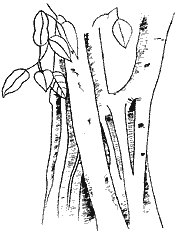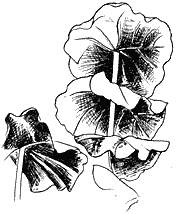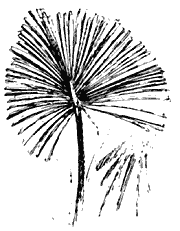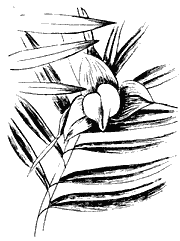| Interesting Plants 1
Tropical
plants comprise about 160,000 of the estimated 250,000 species of plants
on Earth. Following is a sample of the many interesting plants that grow
in the tropics.
Double Coconut
Lodoicea maldivica
Palm family
The largest seed in the plant kingdom looks like two
coconuts fused together, giving rise to this fan palm's common name. The
plant is tender and very slow-growing, especially when young (for instance,
the nut takes a year to germinate and another year to form its first leaf);
hence, it is rarely cultivated. Eventually, it can attain heights of 100
feet and leaf blades to 20 feet in length and 12 feet in diameter. The
fan palm is native to only a few islands in the Seychelles, located off
the east coast of Africa in the Indian Ocean. For centuries its nuts were
mistakenly thought to come from the Maldive Islands, an error preserved
in its Latin name.
 Banyan
Tree Banyan
Tree
Ficus benghalensis
Mulberry family
One of the wonders of the plant kingdom, the banyan,
begins life as an epiphyte, growing on another plant and taking its moisture
and nutrients from the air and rain. The banyan sends down aerial roots
which become accessory "trunks," supporting the tree's immense crown and
allowing it to extend over several acres. Widely cultivated in the tropics,
the banyan is native to India and Pakistan, where it is considered sacred.
 Coccoloba Coccoloba
Coccoloba pubescens
Buckwheat family
Sometimes referred to as "Eve's umbrella," coccoloba
can grow to 80 feet but in its juvenile stage is grown as a pot plant for
its large, veined ornamental leaves. "Pubescens" refers to the fine hairs,
in this case rusty-colored, that cover the leaves' undersides.
 Talipot
Palm Talipot
Palm
Corypha umbraculifera
Palm family
"Umbraculifera" means "bears an umbrella," an appropriate
name for this ornamental. The talipot palm's flower clusters are the largest
in the plant kingdom. Specimens can easily grow trunks to 80 feet in height
and 3 feet in diameter and leaf blades to 16 feet in diameter. The plant
dies after flowering and fruiting.
 Freycinetia Freycinetia
Freycinetia multiflora
Pandanus family
The orange growths on this male specimen are actually
leaves which will slowly peel off to expose small green male flowers.
|

